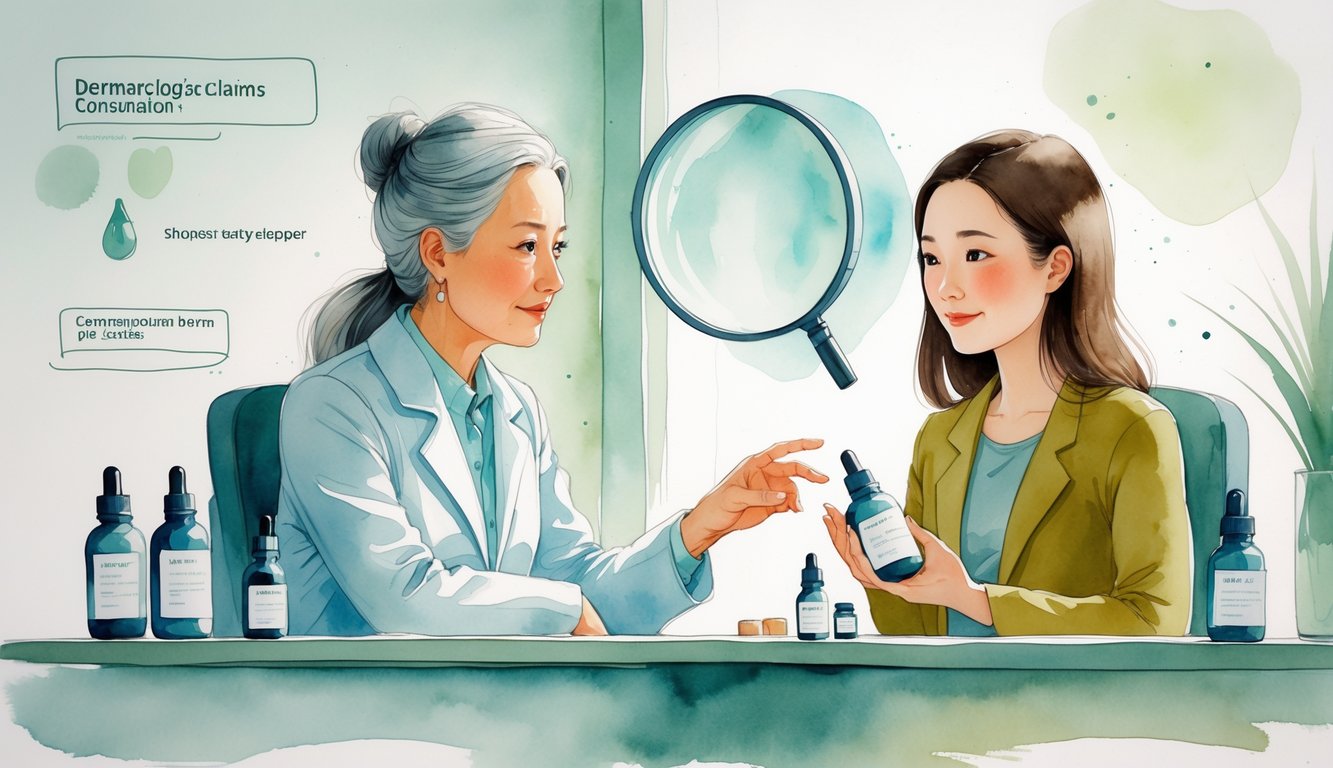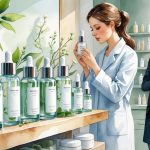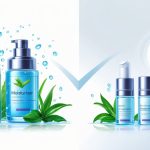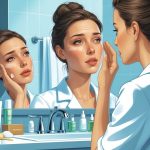Facial Serum Claims Now Under Scrutiny as Dermatologists Warn Busy Shoppers
So, I was doomscrolling last night—again—and I swear, every other ad was pushing some “miracle” facial serum. Never heard of these brands in my life. All of them swear you’ll get glass skin, but only if you fork over another $60 for a tiny dropper. My bathroom’s basically a serum graveyard at this point—half-empty bottles everywhere. Seriously, does anyone ever finish these things? Dermatologists keep telling me (or, well, telling TikTok) that people are coming in with weird skin reactions from these serums all the time. Not just teenagers slapping on retinol for no reason, either (CBS News, 2025; Dr. Divya Shokeen, 2025). At this point, everyone’s dissecting facial serum marketing, and actual skin docs are practically begging people to stop impulse-buying whatever’s trending.
I keep asking myself—are these little bottles just expensive scented water, or am I just impossible to impress? And get this: a 2025 survey says people don’t even ask dermatologists for product advice. That’s like ignoring your mechanic and asking the Uber driver what that weird noise means. And why does every serum say “super,” “lifting,” or “age-defying,” then warn you in the fine print not to use it if you have sensitive skin? I don’t get it.
Why Facial Serum Claims Are Facing Scrutiny

Another week, another pile of DMs about “miracle serums.” Influencers are everywhere, waving around bottles and making wild promises. Dermatologists are finally just calling out the nonsense, and even the FDA’s started to get cranky. Is anyone actually keeping up with this? Feels like everyone’s just getting spammed.
Recent Surge in Claims Challenged
Every new serum claims it’ll “transform your skin in seven days,” but the science barely whispers “maybe a little smoother.” Oral Essentials got smacked by the NAD for making stuff up—advertising rules are suddenly super strict, but also weirdly specific (like, how do you “erase all pores”?). “Dermatologist-recommended” means nothing unless there’s real proof, and the FDA says those labels are basically fluff unless you see actual studies—randomized, double-blind, the whole nine yards.
But who actually checks? Mintel says 62% of adults doubted beauty claims in the last six months. “Clinically proven” usually means they tested twelve people, not thousands. I’ve totally fallen for “dermatologist tested” stickers. Who hasn’t?
The Role of Dermatologists in Unpacking Hype
I asked an actual dermatologist about this, and she just laughed. “Serums are mostly packaging,” she said. She pointed to a 2023 JAMA Dermatology study—less than 15% of serum claims have real, independent data. Some dermatologists are on TikTok and Instagram trying to talk sense, explaining why niacinamide is useful and snail mucin is, well, mostly hype. (I still want to try snail mucin, though. Why? No idea.)
But do busy people care? Not really. Skincare videos are fifteen seconds long. There’s no way to explain humectants versus occlusives in that time. Even in the office, I can’t get through it all. Every new viral trend just makes dermatologists look less credible.
Evolving Expectations Among Busy Shoppers
Most people I know are juggling work, kids, and maybe a yoga class if they’re lucky. No one’s reading ingredient lists. It’s whoever has the best before-and-after photo, not who’s got real data. Brands love vague claims like “improves the look of fine lines,” which means nothing.
Consumer Reports says 74% of people want ingredient transparency now, but only 19% check the label. My theory: beauty claims are made for people who want quick hope, not the ones who want to read science. Still, everyone’s asking for real proof these days. My mom still thinks retinol is a shortcut to movie-star skin because someone on YouTube said so. I give up.
Understanding Popular Skincare Ingredients
It’s kind of hilarious—every label screams about “miracle” ingredients, but my skin still flakes or breaks out like nothing’s changed. Sometimes there’s research, sometimes it’s just marketing. Ingredient lists are mostly useless without context, especially if you’re trying to avoid redness or breakouts.
The Science Behind Hyaluronic Acid, Vitamin C, and Niacinamide
How is it that I can slather on hyaluronic acid and still wake up with dry skin? Supposedly, hyaluronic acid can hold 1,000 times its weight in water (J. Dermatol Sci, 2019), but only if there’s moisture in the air and you seal it in with something heavier, like ceramides or squalane. Otherwise, it’s just sticky.
Vitamin C serums are everywhere. Dermatologists keep saying the problem is stability—L-ascorbic acid breaks down fast in sunlight or air. The research says 10–20% is the sweet spot for brightening (Dr. Dennis Gross, board-certified dermatologist). Niacinamide is the sleeper hit, honestly: it calms redness, fades spots, and doesn’t usually irritate, even if you’re sensitive. Works at 2% or 10%. I’m still not sure which I prefer.
There’s no chart that’s going to save you from years of trial and error. If your skin burns, maybe it’s not the ingredient—maybe you’re mixing too many things at once. I’ve done it. Regretted it.
Peptides and Collagen: What the Research Says
Peptide claims make my brain hurt. Every serum promises “collagen boost,” but collagen molecules are too big to get through skin (American Academy of Dermatology, 2023). Some short-chain peptides (like palmitoyl pentapeptide-4) might help your skin make more collagen and elastin. One study in the International Journal of Cosmetic Science showed less wrinkling after four weeks, but honestly, the results were underwhelming compared to the ad hype.
Topical collagen? Nope, just a fancy moisturizer. Hydrolyzed collagen is supposed to be better, but real clinical trials haven’t shown it thickens actual skin. Whenever I see “peptide complex” on a label, I check the ingredients order. If peptides are last, it’s mostly just a fancy base and a pretty label.
Trending Ingredients: Retinol, Lactic Acid, and Glycolic Acid
Retinol is everywhere, but half my friends can’t use it without turning red and flaky. Still, it’s got the most clinical backing for smoothing lines, fading spots, and unclogging pores (J Am Acad Dermatol, 2018). Stronger isn’t better—most dermatologists now say start at 0.25–0.5% and go slow.
Lactic acid? I once tried a 10% formula and my skin freaked out for days. It’s milder than glycolic acid and sometimes called “hydrating.” At 5–10%, it exfoliates gently. Glycolic acid is smaller, goes deeper, works for texture, but stings if you’re not used to it.
Mixing strong acids and retinol without spacing them out? Bad idea. You’ll regret it. No patch test? That’s on you.
Safe Formulations for Sensitive and Acne-Prone Skin
I wish I could use whatever serum is trending, but my skin explodes if I’m not careful. If you’ve got sensitive or acne-prone skin, the safest bet is simple, fragrance-free formulas—don’t stack powerful actives.
Niacinamide (2–5%) never fails me, even after retinol or exfoliating. Dermatologists always warn about piling on acids or exfoliants (Journal of Drugs in Dermatology, 2022). “Non-comedogenic” and “dermatologist-tested” labels exist, but honestly, they’re barely regulated.
Forget fancy infographics. Trial and error is all that matters. If your skin barrier’s shot, a basic serum with glycerin, panthenol, and ceramides will fix things faster than any new “miracle” active. When in doubt, fewer ingredients. More patience. Nothing fixes a rash overnight.



